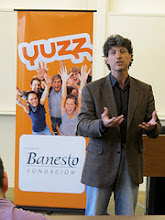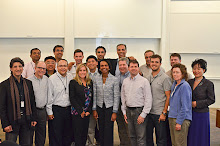CC DV TP: Create, Communicate, Deliver Value to a Target (market) at a Profit.
This is the mantra Philip Kotler uses to define the scope of a company, being (Strategic) Marketing the most powerful tool in the hands of executives and managers to listen, understand and identify consumer needs and requirements, while translating them into the right product/service, made available through the most convenient distribution channels, priced at the right level, communicated and promoted in the proper way.
Marketing is a lot of magic, a mix of sciences (psychology, finance, statistics, …) where things are not black or white and rarely it exists just one right solution: marketing executives speak today the language of CFOs (Chief Financial Officers) in order to get the credibility and fuel (resources, investments,..) to implement their strategies measuring them in terms of ROI or ROM (Return on Marketing).
An optimist, a visionary, a careful listener, a great communicator, a stage architect and a storyteller, the marketing expert must base his/her strategy on rigorous financial metrics, hurdling the company obstacles (dominant culture, silos, resistance to changes) and leading the firm towards a scenario framed by actual, non-actual and future profitable customers, giving them the memorable, sustainable experience they deserve.
It must be clear now the course “Strategic Marketing” I teach at the Global MBA at EOI has a focus directed on getting the basic philosophy and techniques to put together a sound marketing plan, based on a value proposition solving customer “pains”.
We start transforming a strategic idea into a value proposal, researching and segmenting the target market, analyzing Customer Lifetime Value (CLTV) metrics and strategies and integrating the classic mix of Product, Price, Promotion and Place (4ps) with Process, People, Post Sale Service and Personal experience (4 more Ps), to offer a superior, differentiated marketing strategy leading to a long-term competitive advantage.
The conquer of trust and complicity of (enthusiastic and participant) customers, the use of transparency, passion, engagement, contextual marketing and personalization are the main topics in reported market strategies and tactics, escaping from competition and looking for “blue oceans”.
On top of consumer behavior, marketing basics, mktg planning and major strategic marketing tools (basic and advanced), some new and disruptive marketing trends and models are reviewed, included product development innovation and digital mktg.
Both a theoretical and practical approach is given with a global perspective, while students are able to deal with real situations, while introducing them to high performance management tools like One Page Plan, Marketing Dashboard and Magic Matrixes.
In terms of methodology, the case method, my blog, Ted.com, Seth Godin (we are not liars), professor Google and a huge blackboard are salted with the class enthusiastic participation, sharing our questions and doubts, our experiences and visions, in a diverse, multi-cultural scenario made by Italians, Turkish, Panamenians, Venezuelans, Germans, Russians, Spaniards, Colombians, … in a kaleidoscope of ideas and feelings.
Creating a 3 minutes video-blog, writing posts in their personal blogs and making their own marketing plan are some basic targets, complemented by sharing how marketing concepts are applied in real companies, improving students presentation and communication skills and providing opportunities to articulate and defend a business position.
We want to create a sense of “tribe” belonging, driving the correct implementation of strategies into tactic customer operations and making our students aware of the need to bring our customers and their voice to the Board, through a Chief Customer Officer, creating a Customer Advising Board, and a Customer Relationship Governance committee, etc.
Resuming, the program shares a global vision of the marketing function, as a leveraging element of the company strategies towards customer knowledge, satisfaction and loyalty, while using imagination and innovative metrics as complementary tools.
Well, I have to confess I spent a session connecting dots, talking about Steve Jobs, Apple and happyness, but this is another story.
I think smiling, real, sincere, “Duchenne” style smiling, is a great tool in our business hands: we have the moral obligation to spread happiness and love in our offices to avoid the social pollution created by the economic crisis.
Happyness drives to success, being valid for individuals and enterprises.











